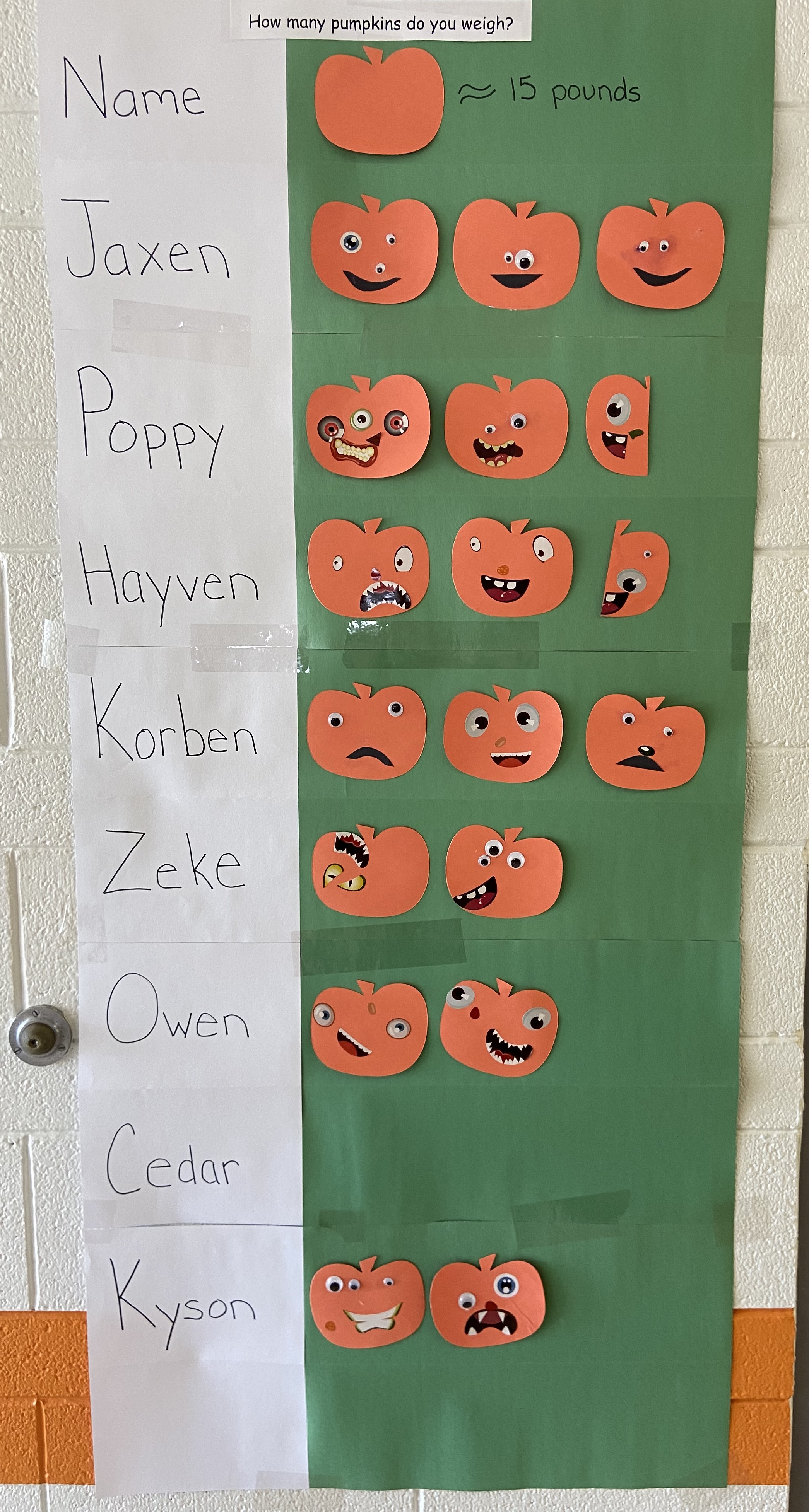Numa fourth-grade students become Collaborative Learners as they planned and created cup towers for Tribe Points.
Churchill County High School
Students Joshua Enriquez, Adam Patrick, Billy Peterson, Kenny Coval, Caitlyn Dock, Makomborero Chenyika, Rodrigo Ibarra, and teacher Monica Fairbanks were all recognized as Churchill Champions.
Every month, staff nominates others who they feel are going above and beyond to make CCHS a better place. These students and staff are Global Citizens who impact their school community responsibly. They work hard, help others, are kind, are leaders, push themselves to improve their learning, and are exceptionally thoughtful.
This is also an opportunity to acknowledge students who have made strides in turning themselves around and become positive influences on others.
Churchill Champions was started by teacher, Jamie Shafer, six years ago. “Jaime has always been extremely cognizant in creating a positive environment in her class and the school in general,” teacher Heather Benjamin said.
When Shafer started at CCHS she noticed there wasn't much in the way of positive reinforcement or a program to recognize students and staff who always shine. With the help of educator Joe Wood, Churchill Champions was born.
 Northside students became “Critical Thinkers” as they learned about the life cycle of a pumpkin in Laura Lee Christensen’s class.
Northside students became “Critical Thinkers” as they learned about the life cycle of a pumpkin in Laura Lee Christensen’s class.
Churchill County Middle School
All eighth-grade students are on their way to becoming Lifelong Learners as they finished the six-week Pathways to Success program.
“It has been a time-consuming and large undertaking,” said teacher Traci Miller. Pathways is a six-week, 12-lesson course that helps students see their future selves as relevant to their current choices and provides activities to link their current selves, next year's selves, and future selves together.
“Pathways focuses on strategies we can use now to help us accomplish future goals, realizing positive and negative forces in our lives and knowing that our future timelines will have choices and roadblocks to overcome,” Miller said.
The program examines four domains of adulthood, careers, relationships, lifestyle, and community involvement, and how those are interconnected to the present and future. CCMS teachers spent three days this July at UNR learning and training with the founder of Pathways, Daphna Oyserman, so they could offer this program at CCMS.
“I enjoyed hearing about students' futures and the positive and negative forces in their lives as well as strategies they can use now and in their future to be successful,” Miller said.
Developing children’s Future Stories is a key focus in Churchill County schools.
Numa
Students in Colleen Tutty’s fourth-grade class were Collaborative Learners as they planned and created cup towers for Tribe Points. Faculty, staff, and students are part of a ‘Tribe’ at Numa. There are four tribes: yellow, red, green, and blue.
Throughout the year, each tribe works as a team in the classroom and school activities to earn points for their respective tribes. Points are rewards for completing a task or winning a challenge or game. Throughout the school year, tribe points are given within the classrooms, and each teacher is given the freedom to award points as they choose. There are also “Flash Challenges” whereby the tribes compete to win points. Four times a year, the points are totaled, and the tribe with the most points is rewarded. “We use this as a way to build community, have positive interactions with other students and staff members, and get to know those in our Numa Community even better,” Tutty said.
E.C. Best
Students in Ashley Youles, Tracy Soules, and Juliann Lambson's classes were Critical Thinkers when they learned about the states of matter using root beer floats. All three states of matter are visible in a root beer float, and they don't require the use of any chemicals or substances that could be dangerous.
Students had to make predictions about how the matter would change. What happened to the solid when it combined with the liquid? It melted. What happened to the gas when it mixed with the liquid? It created foam.
“Gas can be a trickier state of matter for kids to visualize, so the root beer foaming gave them a good opportunity to see matter in action,” Lambson said. Students will be assessed on this standard as part of LCF, so these teachers wanted to create an experience for their students. “We did root beer floats because it is highly engaging and motivating, and we thought it would be something they would remember,” Lambson added.
Lahontan
First-grade students in Jennifer Gehant’s class were Inspired Innovators during their fun fall painting project. They wanted to get a different effect when painting their fall trees and thought they could do that by using broccoli.
“Our awesome kitchen staff delivered the broccoli to our classroom, and then we took the final product to the cafeteria to show the kitchen ladies the neat effect the broccoli added to the trees,” Gehant said.
Students and staff always look for ways to challenge the status quo and act on their creative ideas.
Northside
Students in Laura Lee Christensen’s class were Critical Thinkers as they learned about the life cycle of a pumpkin.
Students compared their weight to the weight of a pumpkin and analyzed the difference between the two weights. They also worked on their fine motor skills by hammering the pumpkin. Students also worked on their speech by presenting to the class about pumpkins.
Not only does this help them develop their speech, but it also helps them develop strong presentation skills and improve their confidence as they speak to a larger group. To ensure students are Lifelong Learners they start working on these skills at a young age.